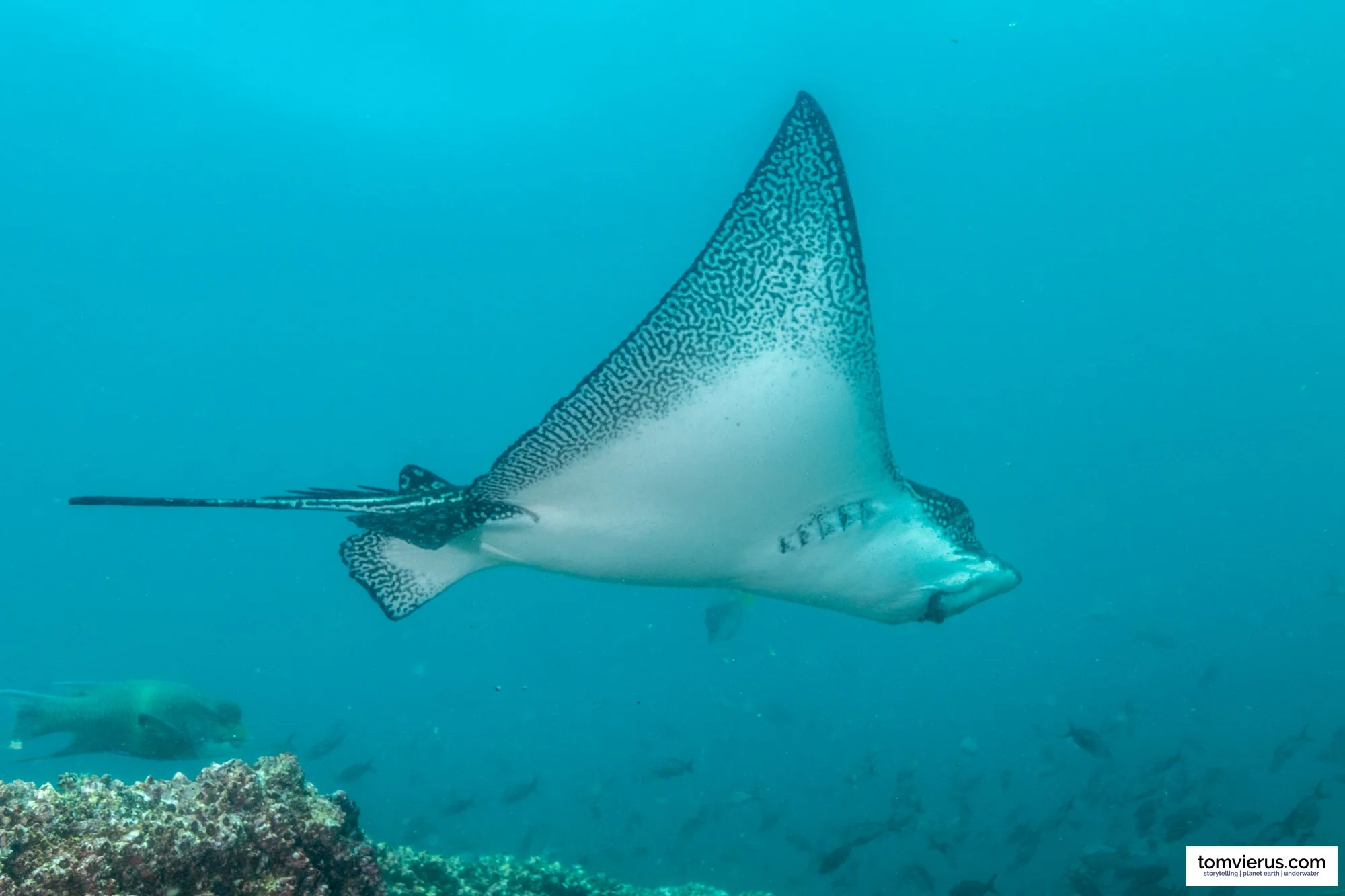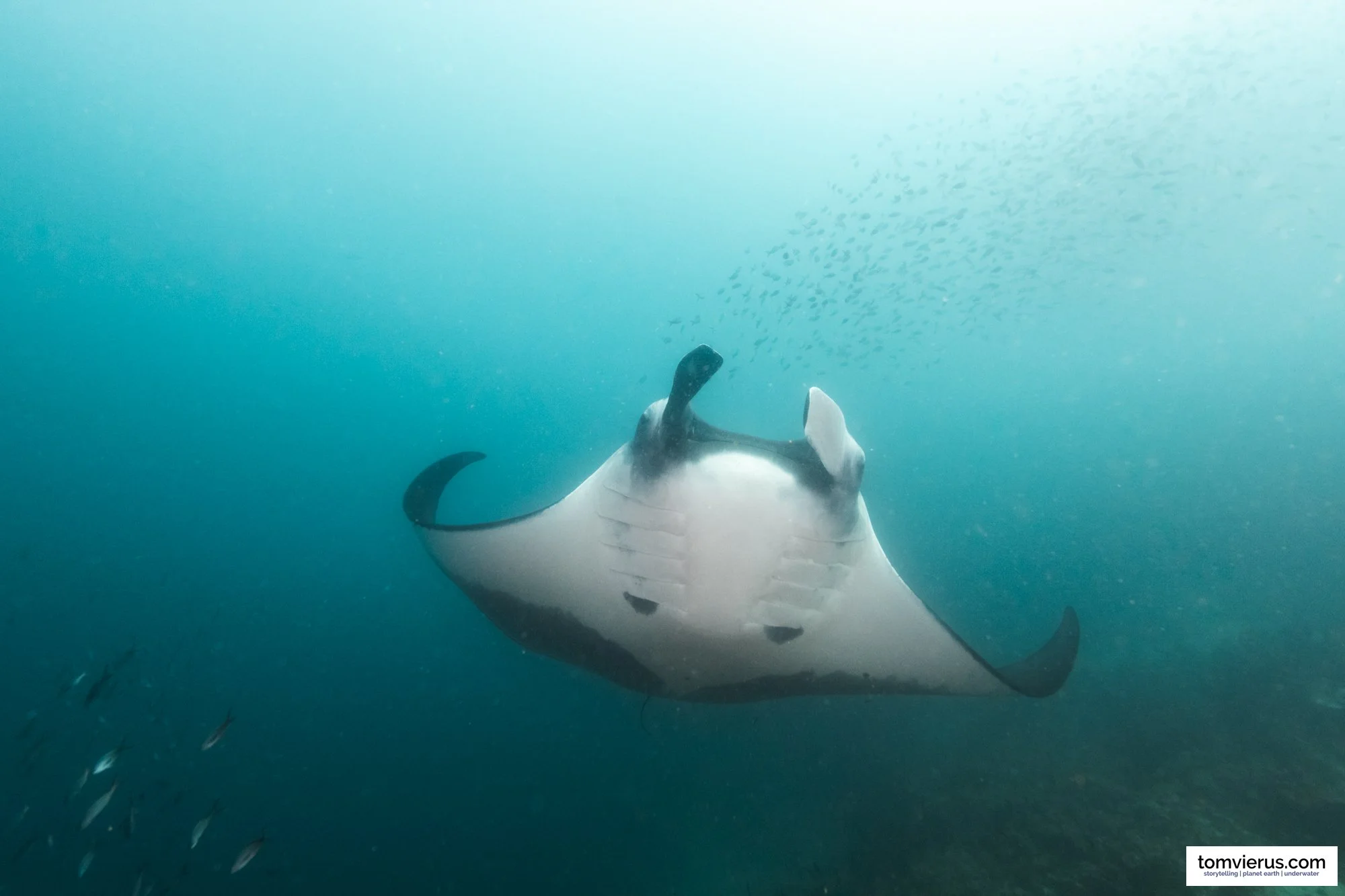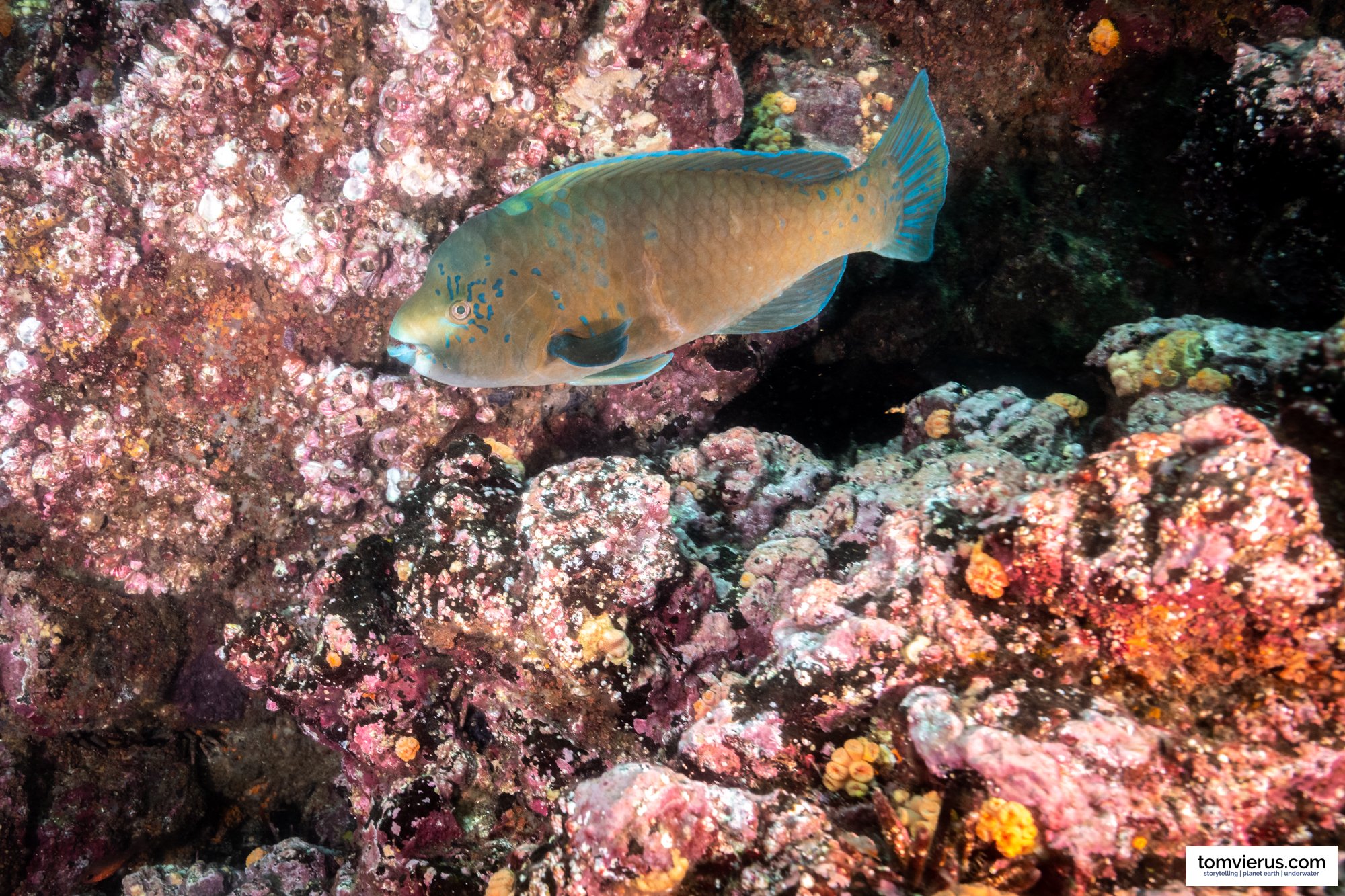Galápagos Diving from a Photography Perspective | Cabo Marshall | Part 8
This series of posts is about an 11-day liveaboard trip throughout the Galápagos Islands aboard the Deep Blue with the Master Liveaboard Fleet. Having shot several thousand images, I thought to share a few more here than on my other social channels, but be sure to check out my Instagram, TikTok, Youtube and Twitter for more. This part is about diving at Cabo Marshall at the northwestern tip of Isabela Island. Have a look at the other posts in this series.
When I woke up the next morning, we had already moved to the eastern side of Isabela Island, where we would be diving at Cabo Marshall. This location was specifically known for its occurrence of the critically endangered Oceanic Manta Rays (Mobula birostris). I was looking forward to these dives as I had never seen oceanic manta rays in the water but only observed them from a boat and through the screen of my drone. Last year, Luke Gorden and I published a scientific paper in the PeerJ Journal, providing the first photographic evidence of their occurrence in Fiji's waters. And the craziest thing is that they're found right off Fiji's capital Suva! Whoever is interested in having a look at the paper (or just looking at a few drone images that we published), head over to the PeerJ webpage, where you can download it. But back to the Galapagos Islands.
Murky waters make it difficult to see at Cabo Marshall
An Oceanic Manta Ray (Mobula birostris) swooshes past me during the first dive in rather murky conditions.
These Pacific creolefish (Paranthias colonus) congregate in the murky waters near the shoreline of Isabela Island.
Two scalloped hammerhead sharks (Sphyrna lewini) at Capo Marshall.
A Fine-Spotted Eagle Ray (Aetobatus narinari) passes by in the waters surrounding Wolf Island, Galapagos Archipelago. These Eagle Rays are considered ‘Endangered’ by the International Union for Conservation of Nature (IUCN).
By now, the dive deck was a closed group, and everyone knew the process well. The dive site was very close to shore, and the plan of the dive was to make our way parallel along the shoreline in depths of 10-20m. Unfortunately, as we entered the water, we were hit by rather bad visibility.
Nevertheless, right after dropping in, a large oceanic manta ray approached me out of the blue, and I managed to snap an image, but due to the bad visibility, it vanished quickly out of sight. We continued the dive but were unlucky for the rest of it, and besides spotting large groups of Pacific Creolefish.
Third dive brings us luck!
Finally! A majestic Oceanic Manta Ray (Mobula birostris). Did you know that you can easily identify an oceanic manta ray by the two half-moon-shaped black shapes at the lowest gill slits?
A Guineafowl Puffer (Arothron meleagris).
I haven’t been able to identify this fish yet, and iNaturalist hasn’t helped yet, either. Does anybody know what this might be?
For the second dive, we moved a few kilometres south to try our luck there, but again weren't lucky. We did get to see a beautiful eagle ray, a large yellow-fin tuna passing by in the blue, and two rather small scalloped hammerheads kept following us, but we had yet to see the majestic manta rays close-up. We moved back to the first location for the third dive, hoping that the tides had done their magic and the visibility would have improved. And indeed, it was much clearer - this had to be the dive!
We basically repeated the first dive and followed the shoreline, passing a few potential cleaning stations and looking out for any manta ray action. When I heard the shaker, I knew we had found them! We spent the last minutes of the dive with the ray, which kept coming back and circling us. I managed to snap a few images, and although the visibility was overall still not the best, it was a great experience witnessing these large rays close-up and personal. Having seen reef mantas quite a few times here in Fiji, I think this particular individual wasn't the largest but rather the size of the large reef mantas we get in Fiji, but that leaves me with another great incentive to come back! If there weren't enough already..









